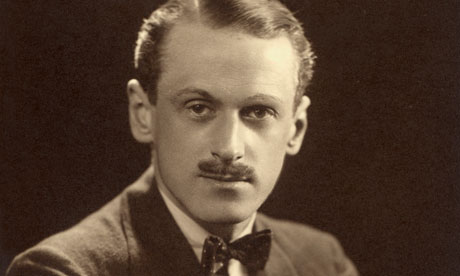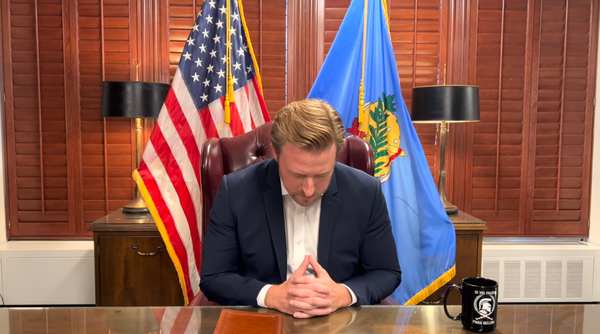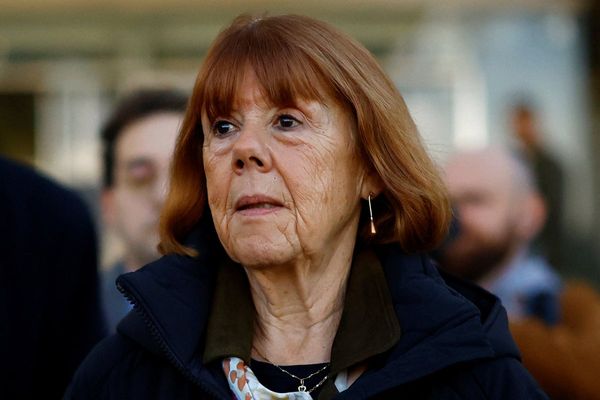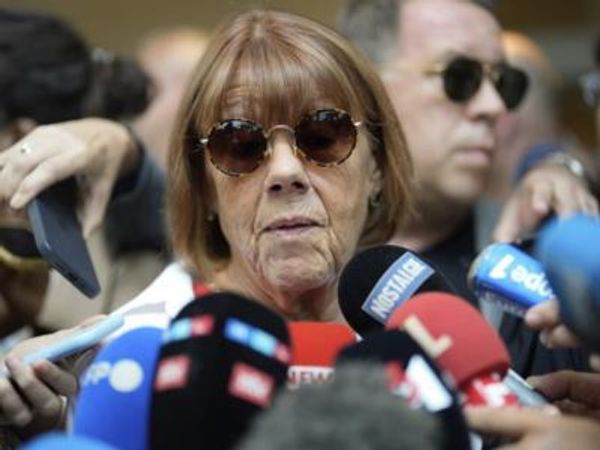
The BFI's restoration of the 1928 silent The First Born, with Stephen Horne's new score performed live, was one of the big events of the BFI London film festival. Full of surprises, including two racy "making eyes" scenes that had the Queen Elizabeth Hall audience all aflutter, it lives up to Michael Powell's description of the "fluent, expressive, visual story-telling" of late silent cinema that had been cut short by the introduction of synchronised sound. Directed by Miles Mander – a black-sheep Old Harrovian with a background in boxing promotion, aviation and sheep farming – it's a topical tale of a hypocritical, philandering politician who exploits his wife to mop up the women's vote. It was released just after the 1929 "Flapper Election", which brought women under 30 into the franchise for the first time, and in which Miles's brother Geoffrey became an MP.
Co-scripted by Alma Reville, an experienced screenwriter and Alfred Hitchcock's wife, and starring the future Hitchcock blonde Madeleine Carroll (Powell had hair-raising things to say about her relationship with Mander), it's no wonder the BFI has played up the film's connections to the big man. Whereas Hitchcock's Blackmail, which also premiered in 1929, entered the sound era with aplomb, Mander, it is said, faltered – all but abandoning the director's chair for life as a character actor. He eventually moved to Hollywood, where his credits included the Merle Oberon Wuthering Heights in 1939, Lubitsch's To Be or Not to Be from 1942, and the noir classic Farewell My Lovely two years later.
But that story is too neat: before making his silent debut, Mander had, in fact, been a sound-film pioneer. Hitchcock and Mander had first got to know each other in the early 1920s as members of what Michael Balcon, producer of The First Born and of Hitchcock's first films, called "the Pack"; a group who "assembled at the Legrain coffee shop in Brewer Street, Soho, on the days we were not working (which were all too frequent)". Mander, having come into the business as a producer, had started acting for the director Adrian Brunel, before going on to star in Hitchcock's debut feature The Pleasure Garden in 1926. Later that year Mander, too, moved into direction, but in almost uncharted territory.
Mander joined the staff of De Forest Phonofilms, based in a tiny, poorly equipped studio at Cranmer Court, Clapham, managed by West End showman Vivian Van Damm (later played by Bob Hoskins in Stephen Frears's Mrs Henderson Presents). Mostly comprising music hall sketches, songs and extracts from plays, short "phonofilms" had begun to be shown in the supporting programme at British cinemas in the autumn of 1926, almost a year before the American release of The Jazz Singer, the movie that changed the industry.
Hitchcock ally and Evening Standard critic Walter Mycroft, among those who feared that sound would reduce a new art form to canned theatre, wrote that "to talk of it as the 'hope of the British film industry' is to disclose a fundamental inability to understand the function of the film". But intellectual celebrities, including the Sitwell siblings and George Bernard Shaw, made the trip to Clapham, with the latter authorising Van Damm to make the first ever filmed adaptation of one of his plays – Saint Joan, released in 1927.
In April 1929, when Mander's Clapham films were still in circulation, now joined by the first rush of full-length talkies, the notorious gossip columnist Nerina Shute wrote that Mander "probably knows more of 'talkie' production than any man in this country". From contemporary descriptions, most phonofilms appear to be quite straightforward recordings of stage performances, but in the likes of As We Lie, based on his own one-act play, and Sentence of Death (1927), based on a John Collier painting, Mander said he "used exteriors, talking 'off', tacit periods and angular set-ups, but although I used no titles, I obstinately refused to put dialogue on every foot, as one of the financiers suggested. In one film I think I had as many as 51 shots in 1,300ft." Mycroft, won over, called As We Lie "the highest development yet in this, the very newest medium of dramatic expression".
Unfortunately, none of Mander's phonofilms are known to have survived, and his plans to add a soundtrack to The First Born apparently came to nothing. But might his almost forgotten achievement help explain how his friend Hitchcock – who cast Lilian Hall-Davis in his 1927 film The Ring after seeing her in As We Lie, and Dorothy Boyd from Sentence of Death in Easy Virtue in the same year – made the transition to sound with such confidence?







